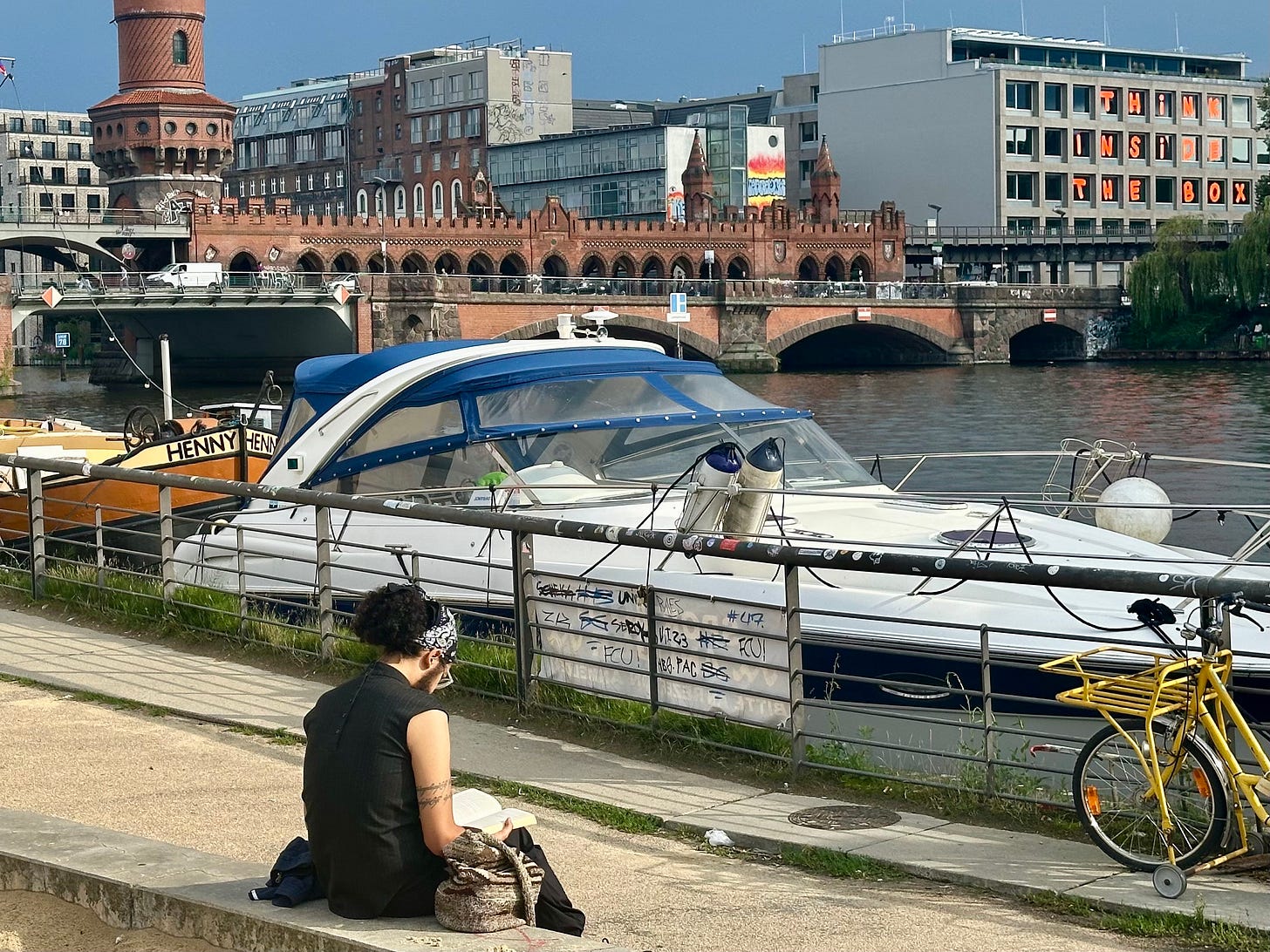Thinking Inside the Berlin Box
A bold colourful slogan on a workspace window reimagines creativity not as escape, but as depth found within boundaries — a quiet revolution in the heart of a once-divided city.
“Think Inside the Box”
– Window lettering on a building near the Oberbaum Bridge, Berlin (Tue 22 Jul 2025)
Summary
The phrase “Think Inside the Box,” displayed in bright letters across a building overlooking the Spree River in Berlin, provocatively inverts the familiar encouragement to “think outside the box.” In a city shaped by division, innovation, and reinvention, this twist challenges assumptions about creativity, context, and constraint. Sometimes, the most powerful thinking happens within the structures we inhabit, both architecturally and historically.

Explanation
This piece of window advertising cleverly reverses a staple of modern motivational speak. “Think outside the box” has long been shorthand for urging originality and breaking conventions. Yet this inversion — “Think inside the box” — proposes a counter-argument: that true insight may arise not from endless boundary-pushing, but from working meaningfully within existing frameworks.
In practical terms, the quote is almost certainly tied to the purpose of the building itself — likely a workspace, studio, or creative office — where the “box” is not a metaphor for limitation, but a literal space for focused thought, collaboration, or innovation. The message is a reminder that inspiration doesn't always live outside boundaries; it can be cultivated within them.
Set just across from Berlin’s iconic Oberbaum Bridge — once a militarised border crossing between East and West during the Cold War — the phrase gains deeper resonance. A short walk away, fragments of the Berlin Wall still stand. In this context, the “box” may symbolise ideological, physical, or psychological constraint. But rather than rejecting such structures, the sign suggests that clarity, creativity, and identity can grow through them.
There’s also a subtle play on place. Berlin, once confined by its own geopolitical “box,” is now a city defined by its ability to reimagine constraint as potential. Its transformation is not a clean break from the past, but a layered integration — critical, creative, and often ironic — of what came before.
In the photo, the relaxed figure reading by the water embodies this shift in tone. Across the river, the bold slogan gleams from the modern building, while on the near side, someone sits still, reflecting inward. It’s a portrait of contrast and continuity: presence within structure, stillness within transformation. Perhaps “thinking inside the box” is less about settling — and more about seeing what's already there with new eyes.
About the Author (or Creator)
Though the originator of the quote remains unknown — likely an advertising or design collective — the message draws from a lineage of postmodern inversion and subversive urban commentary. In the context of Berlin, this kind of cultural expression is common: from the East Side Gallery’s graffiti-covered wall segments to conceptual installations scattered across the city. The author here is less an individual than a creative culture steeped in irony, repurposing, and thoughtful contradiction.
An After Afterthought
“Everyone says you're amazing now that you're clean…”
— Seal, “Amazing” (2007)
Some strength doesn’t shout — it survives. Seal wrote “Amazing” during his marriage to German-born model Heidi Klum, and he’s spoken about how her steadiness and presence inspired the song. It’s about a deep, personal kind of resilience — the kind that happens quietly, in private, when someone chooses to rebuild from the inside out.
In Berlin, that same strength lingers in the structure of the city. A bridge that once split East from West now links a unified skyline. The remnants of the Wall remain, not as scars to be hidden, but as canvases for new stories. And in a quiet corner, someone sits reading — not escaping the past, but reflecting through it.
“Think Inside the Box” isn’t just a clever inversion of a cliché. It’s an invitation to consider how we change — not by fleeing structure, but by inhabiting it fully. True resilience isn’t loud or dramatic. Sometimes, it looks like showing up, holding steady, and becoming amazing in the quiet spaces where no one’s watching.

